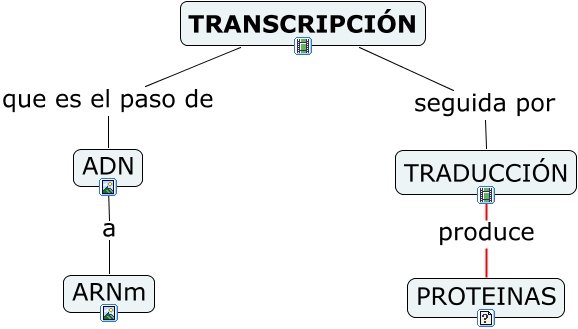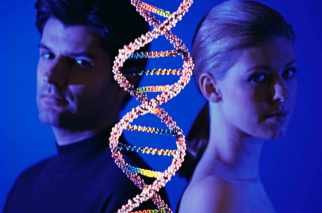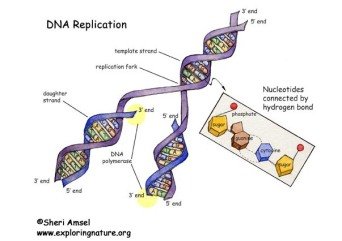
To begin with this important topic we must know how these illustrious characters interested in the structure of DNA were found. James D. Watson, was born on April 6, 1928 in Chicago, United States. His first studies were in Zoology at the University of his hometown and then he obtained a PhD degree in the same specialty at the University of Indiana, where he began his interest in genetics.
In 1950 he left for Copenhagen, Denmark, to begin his postdoctoral studies. During a conference in the city of Naples, Italy, he met Maurice Wilkins and was fascinated by his studies on images of the diffraction pattern of DNA through X-rays. , who in the early 1950s came to Cambridge, England with a research grant to study problems of molecular structure. There in the Cavendish laboratory, he met the doctor Francis Crick.who shared his passion to unravel the secrets of the molecule of life. both interested in studying the DNA and soon they went to work together to solve the problem of its molecular structure. Francis Crick came to the world in Northampton, England, on June 8, 1916, the second of two brothers. He studied Physics in London, being interrupted his doctorate studies by the Second World War in 1939. During the war he worked in the British Marine Ministry, a place he left in 1947 to study biology at the University of Cambridge. they did not carry out expeditions in the usual way, but undertook to carry out all the data referring to the topic and to unify them in a meaningful whole. From all this data, Watson and Crick tried to build a DNA model that was in accordance with known facts.

The steps of the ladder, perpendicular, are formed by nitrogenous bases - ademine (A) thymine (T) guanine (G) and cytosine (C), one base for each sugar-phosphate and two bases forming each rung.
February 28, 1953: after multiple investigations and reflections from teams of scientists in different parts of the world about what was the DNA form in the nucleus of the cell that allowed him to duplicate and transfer his information, James Watson and Francis Crick arrived to that conclusion.
These men of science discovered that the DNA components were always grouped in the same way: the nitrogenous bases in pairs: Adenine-Thymine and Guanine-Cytosine, always linked by sugar molecules (deoxyribose) and phosphate groups. All these elements configured a ladder that was going doubled, whose "steps" were the nitrogenous bases linked by hydrogen bonds and the "rails" or framework, the sugars and phosphates. Watson and Crick won the Nobel Prize in Medicine and Physiology in 1962 "for their discoveries about the molecular structure of nucleic acids and their importance for the transfer of information in living matter", when they were 23 and 36 years old respectively.
Semi-preservative autoduplication of DNA and chromosomes
the most exciting discovery of watson and crick, nevertheless came when they undertook the construction of the complementary cord they found an interesting and important restriction is called semiconservative autoduplication, because each DNA molecule is duplicated and originates 2 daughter molecules, which conserve a helix or cord of the "mother" molecule and synthesize a new helix, so that 2 exactly identical daughter molecules are formed.

the duplication of the chromosomes, as well as that of the DNA, is semiconseverative, given that each chromatid originates a complementary duplicate. then in the chromosomes as the DNA after the duplication, a chromatide or an old chain remains, while the complementary ones are totally new.

#
Watson and Crick's model also clearly demonstrates how the DNA molecule is capable of carrying genetic information. the information is coded in the sequence of the bases and any sequence of the four pairs is possible (AT, TA, GC, CG). since the number of base pairs in a sequence, ranging from about 10,000 in the simplest virus known, to the estimated number of ten million in the 46 human chromosomes, the number of possible variations is really huge.

GLOSS
Adenine: is one of the five nitrogenous bases that are part of the nucleic acids (DNA and RNA) and in the genetic code is represented by the letter A.
DNA: deoxyribonucleic acid is a nucleic acid that contains the genetic instructions used in the development and functioning of all living organisms and some viruses, and is responsible for its hereditary transmission.
The RNA: ribonucleic acid can be defined as the molecule formed by a single strand of ribonucleotides, each of them formed by ribose, a phosphate and one of the four nitrogenous bases.
Cytosine: is one of the four nitrogenous bases that are part of the nucleic acids (DNA and RNA) and in the genetic code is represented by the letter C.
Chromatin: is the way in which DNA is presented in the cell nucleus. It is the base substance of eukaryotic chromosomes, which corresponds to the association of DNA, RNA and proteins found in the interphase nucleus of eukaryotic cells and which constitutes the genome of these cells.
Deoxyribose: or more precisely 2-deoxyribose is a deoxyazugar derived from a monosaccharide of five carbon atoms derived from ribose by loss of an oxygen atom at the 2 'hydroxyl.
Phosphates: are the salts or esters of phosphoric acid. They have in common a phosphorus atom surrounded by four oxygen atoms in tetrahedral form.
Guanine: is a nitrogenous base, one of the five nitrogenous bases that are part of the nucleic acids (DNA and RNA) and in the genetic code is represented by the letter G.
Molecula: (from the new Latin molecule, which is a diminutive of the word moles, 'mass') is an electrically neutral and sufficiently stable group of at least two atoms in a definite configuration, linked by strong chemical bonds.
Thymine: is a heterocyclic compound derived from pyrimidine. It is one of the five nitrogenous bases that constitute the nucleic acids, it is part of the DNA and in the genetic code it is represented by the letter T.
BIBLIOGRAPHY:
Serafin Mazparrote 2nd year biology of sciences
https://www.explora.cl/191-sabias-que/sabias-biol/1395-discubre- sabios-ser-humano-biologia-2
https://www.wikipedia.com
https://cienciasomostodos.wordpress.com/2013/11/15/la-escalera-de-la-vida/
¡@rosnely! Muy bueno el contenido, sigue asi!
Esta publicación es apoyada por la comunidad UNEEVERSO, para que al obtener votos automatizados pueda conseguir PROMOCIÓN GRATUITA y pueda darse a conocer a un público más grande. Este contenido lo merece, considera darle reesteem.
¿Te interesa, obtener upvotos y dar a conocer tu publicación?
Te invitamos a unirte a nuestra comunidad, cada día crece más y tu puedes crecer con nosotros.
¿Te interesa conocer sobre nuestro proyecto?: https://goo.gl/cuFExt
¿Te interesa conocer sobre nosotros y sobre actualizaciones de uneeverso.com?:
* Acceso a Uneeverso : https://www.uneeverso.com/registro
* Acceso temporal a Uneeverso : http://uneeverso-oficial.mircloud.host/registro
* Uneeverso en discordapp: https://discord.gg/Y5kM5Kj
* Siguenos: @blickyer @yunior.selbor @sweetvenon @arevaloarcadio @baudilio @jnavarrotovar
Hola @rosnely, upv0t3
Este es un servicio gratuito para nuevos usuarios de steemit, para apoyarlos y motivarlos a seguir generando contenido de valor para la comunidad.
<3 Este es un corazón, o un helado, tu eliges .
: )
N0. R4ND0M:
7891 7745 7487 4075
9408 6087 7515 6102
8155 3929 6328 1753
5700 5060 8885 5533